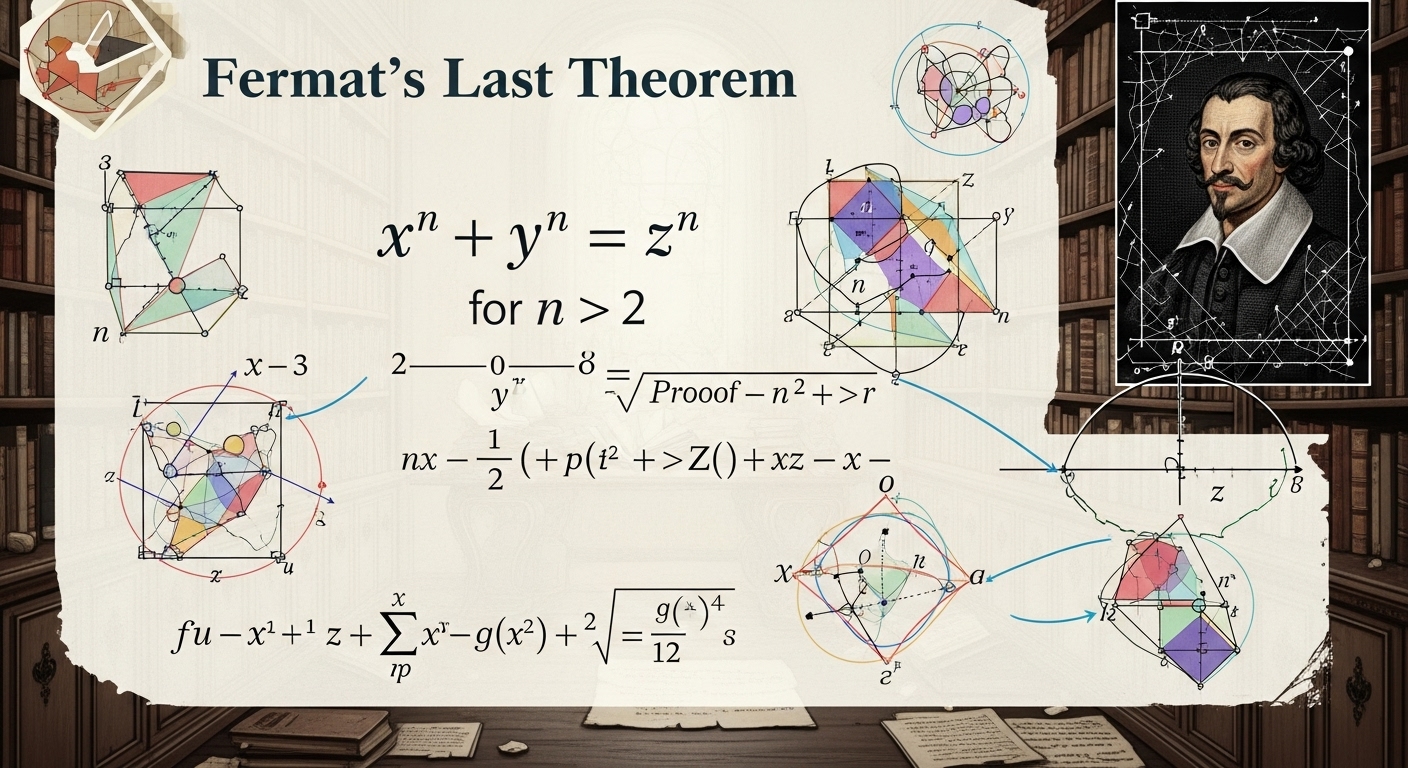
Fermat's Last Theorem is a difficult problem in number theory proposed by the 17th-century French mathematician Pierre de Fermat. Its contents are as follows:
When the integer $ n $ is a natural number greater than or equal to 3, there is no non-zero integer solution (x, y, z) satisfying x^n + y^n = z^n .
Origin and history of the theorem
• In 1637, Fermat left this theorem in the margin of the ancient mathematics book 《Arithmetica》, with the famous note, "I have proved this theorem in a wonderful way, but I cannot write it down because there is not enough space".
• Over the next 350 years, numerous mathematicians attempted to prove it, but failed, and in the process, many fields of mathematics, such as algebraic number theory, greatly developed. Completion of the proof
• In 1995, British mathematician Andrew Wiles finally proved this theorem using various theories of modern mathematics (elliptic curves, modularity theorem, etc.).
• Wiles' proof was a complex paper of over 100 pages, and it took more than two years for his fellow mathematicians to verify it.
The meaning and influence of the theorem
• Unlike the Pythagorean theorem ( n = 2 ), the key point is that in n \geq 3 there are no natural number solutions that satisfy the equation.
• Fermat's last theorem is one of the longest unsolved problems in the history of mathematics, and the process of proving it led to a great development in modern mathematics.
• The proof of this theorem caused a great stir not only in the mathematical community but also in the public, and many related books and documentaries were produced.
'인공지능 수학' 카테고리의 다른 글
| Feynman's Study Method (Feynman Technique) Key Summary (0) | 2025.07.16 |
|---|---|
| Michael Faraday (0) | 2025.07.16 |
| Convergence and Divergence (1) | 2025.07.11 |
| Philosophiæ Naturalis Principia Mathematica (0) | 2025.07.10 |
| What is quantum mechanics? (0) | 2025.07.10 |



